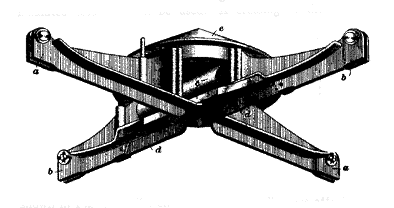
The overhead wire was supported by gunmetal fittings, up to 40 cms long, known as 'ears'.
Standard Ear

Special ears were made with anchorages for attaching straining wires (a) or to take the strain in one direction in the event of frequent breakage of the contact wire (b).
To feed power into a contact wire, an ear with a connecting terminal was manufactured (c).
At a joint in the contact wire, the ends were held by a splicing ear (d).
a) Strain or anchor ear
b) Half-anchor ear
c) Feeder ear
d) Splicing ear
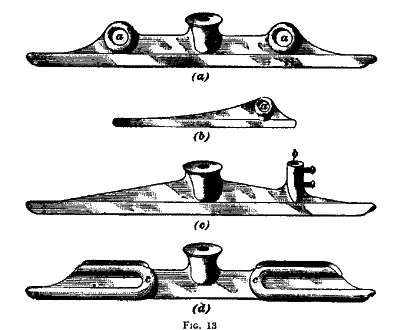
On curves, the wire could be pulled to one side by straining wires attached to 'pulloff' insulators. The single pulloff could only operate on a single contact wire. The double pulloff was used on the outermost wire of a curve in a twin-track system, allowing the straining wire to continue to a single pulloff on the innermost contact wire of the curve without fouling the power collecting device of the vehicles.
Double and Single Pulloffs
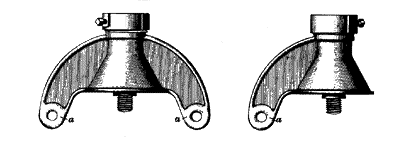
At points where one track bifurcated or two tracks joined, the overhead wire was similarly dealt with by means of a 'frog'.
Various types of Frog
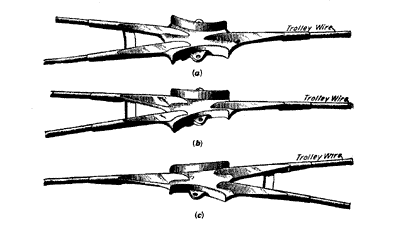
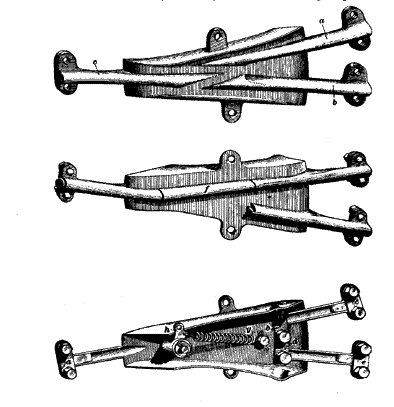
Where tracks crossed, the overhead wires crossed in a 'crossing' fitting which could, if necessary, insulate one wire from the other.
Standard Crossing
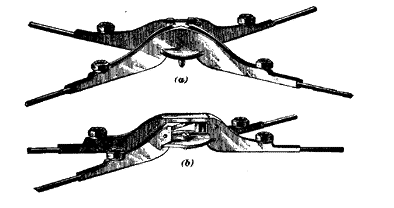
Insulated Crossing
